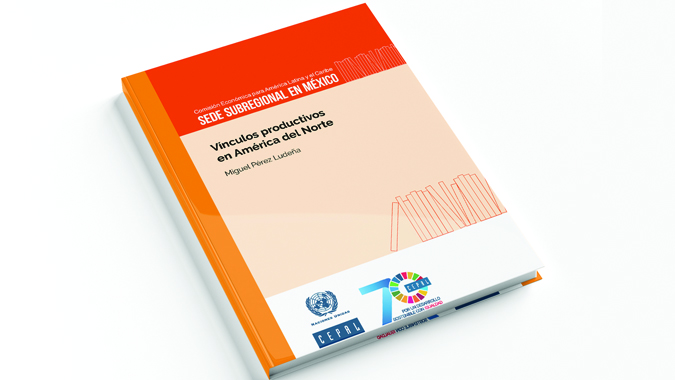Study Analyzes Mexico’s Degree of Economic Integration with the United States and Canada
Work area(s)
The document “Productive Links in North America” analyzes trade and investment between the three nations, without addressing migratory flows, although it recognizes their importance in terms of development.

The economies of North America have sustained strong trade and investment links over the 25 years of the North American Free Trade Agreement (NAFTA). In this space for economic cooperation, regional value chains have emerged that have allowed North American companies to handle strong international competition. That scenario provides the context for this new publication by ECLAC’s Subregional Headquarters in Mexico.
The document Productive Links in North America (in Spanish only), published in May 2019, reviews the degree of economic integration between Mexico, the United States and Canada. It analyzes the competitiveness of the main industries in the three countries, how they are related to each other through value chains, and the impact of trade and investment flows on Mexico’s productive structure and its development.
In the study, author Miguel Pérez Ludeña, a consultant for ECLAC’s International Trade Unit, indicates that Mexico’s integration with these nations to the north has allowed it to attract major Foreign Direct Investment (FDI) flows to manufacturing and to create capacities in export industries that local companies would not have been able to achieve by themselves. However, the author also mentions that foreign companies have left little value-added in the country and have invested very little in innovation and development. As a result, integration in North America has not managed to bring Mexico’s average income closer to the level of the United States or Canada.
Furthermore, the document by ECLAC-Mexico notes that the largest share of trade between the NAFTA countries is concentrated in manufacturing. Within this sector, the automotive industry stands out, followed by the electronics and the mechanical industries. These three industries have been able to build a value chain in which parts and components are produced throughout the countries of North America and cross the borders several times before getting to the final consumer. The degree of integration varies depending on the industry, but in all manufacturing sectors the NAFTA countries are the main suppliers of intermediate inputs.
The publication also indicates that foreign investment continues creating manufacturing capacity in Mexico. The automotive industry continued growing in 2017 and 2018 despite the renegotiation of NAFTA, and in these last few years it was able to diversify exports somewhat so as to not depend exclusively on the U.S. market. Separately, energy sector reforms have attracted FDI to this sector and also have increased Mexico’s exports of modern services to the United States.
Foreign investment in North America does not flow solely in one direction: Mexican companies can also take advantage of the opportunity for expansion offered by the United States market, the study emphasizes, although only a handful of companies are doing so now. The majority of investment flows moving from Mexico northward are related to portfolio investment, it adds.
Related content
Subregional headquarter(s) and office(s)
Subregional Headquarters, MexicoType
Country(ies)
- Canada
- United States
- Mexico
Related link(s)
Contact
ECLAC Subregional Headquarters in Mexico, Mexico, D.F.
- registromexico@cepal.org
- (52 55) 4170.5600